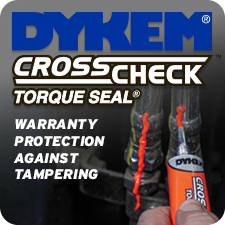How to Protect Your People from Workplace Violence
 By Johnathan Tal
By Johnathan Tal
On a warm afternoon in July 2020, an employee of a mega-store distribution center in Northern California spotted someone driving a white SUV four times around a facility parking lot before the driver crashed the SUV into the building. Once inside the facility, the driver opened fire using a semiautomatic rifle. Observers said the 31-year-old shooter did not appear to be looking for anyone in particular. Instead, he shot at random.
Police were called and arrived within minutes. The shooter then focused his attention on the officers.
"It went on and on — I don't even know how many times he fired," said an employee at the distribution center. "I just know it was a lot." This employee further recounted that people were "running for their lives. I saw people lying on the ground as he [the shooter] went by."
By the time it was all over, two people were dead, including the suspect, and four were hurt and taken to a local hospital. Investigators said the shooter was a former distribution center employee who had been fired more than a year before for not showing up for work.
Violence like this sounds all too familiar. Just a month before this shooting, three people were killed at a coffee maker warehouse and distribution center in Springfield, Illinois. The very next day, three more people were fatally shot at a Walmart distribution center in Northern California. *
Shootings are just one form of workplace violence. According to the National Institute for Occupational Safety and Health, there are an estimated two million victims and nearly 500 deaths each year in the U.S. attributed to workplace violence. OSHA further estimates that workplace violence costs American businesses more than $170 billion annually.
Government Regulations to Address the Situation
In many areas of the country, shootings such as these and other forms of workplace violence are escalating so much – and so rapidly – that states are considering enacting new and more complex regulations to help ensure worker safety. For instance, California's CAL/OSHA is evaluating its current guidelines and has asked for written comments on draft regulations that would require:
- That all employers and employees comply with practices designed to make the workplace safer and more secure, such as not engaging in threats or physical actions that could create a security hazard to other employees.
- Conducting periodic inspections to identify unsafe conditions in the workplace.
- Instituting procedures for correcting unsafe working conditions, practices, and workplace security hazards, with particular attention to strategies for protecting employees from physical retaliation for reporting threats.
- Training and instruction on recognizing workplace security hazards and what to do when an assault occurs, including emergency action and post-emergency procedures. **
Addressing The Challenges
While some distributors and supply houses have taken steps to reduce the chances of workplace violence occurring in their facilities, many have not, or their programs do not go far enough to ensure worker safety. More state governments are likely to follow California's lead, evaluating current programs and requiring employers to do more to protect their staff.
As a result, distributors may be required to take new security measures but may not know exactly where or how to begin to ensure safety for their workers.
The first step is relatively easy. It involves creating a top-down management policy in which the organization has zero tolerance for workplace violence – shootings, bullying, and physical or sexual abuse. None in any form will be tolerated.
The next step involves calling in experts in security consulting and risk management. Typically, these organizations will recommend a risk assessment be conducted.
A risk assessment looks for and identifies vulnerabilities in a facility that could allow people or property to be harmed. It then goes one very large step further, suggesting ways to minimize or eliminate those vulnerabilities.
We can use the SUV shooter mentioned earlier as a perfect example. Why was this person allowed access to the facility parking lot in the first place? And why did administrators not know he was circulating the parking lot several times before crashing into the building?
A risk assessment would likely suggest that this open access is a vulnerability and that access to the parking lot and the facility should be more controlled, reducing the chances of something like this occurring. Further, surveillance cameras or more advanced systems would likely have been recommended.
The risk assessment would then go further when addressing workplace violence. For distributors and all employers, an assessment would include recommendations for improving safety, such as:
- Learning the warning signs of workplace violence. In virtually all cases, there are warning signs which were either not realized or overlooked.
- Instructing managers and administrators on steps to take to protect people and property in an emergency.
- Training staffers in what they should do if workplace violence occurs.
- And as mentioned, installing increasingly more advanced surveillance systems that monitor parking lots and building entries, day or night.
- Hiring armed guards if deemed necessary. We see many banks now positioning armed guards in each of their branches. While this may be a costly step, risks to bank customers and staff have made this necessary in many parts of the country. This may be true for some distributorships as well.
Finally, distribution houses must realize that conducting a risk assessment is not a one-time project. Administrators in distribution must recognize that looking for new ways to protect the health and safety of their staff and their property is an ongoing journey – there is no end point.

Johnathan Tal is Chief Executive Officer of TAL Global Corporation, an international investigative and risk-consulting firm. He served as a military field intelligence officer for the Israeli armed forces during the 1970s. Tal has also served as an antiterrorism security specialist. He is a licensed investigator, Certified Private Investigator (CPI), and Certified Fraud Examiner (CFE), and he holds a Bachelor of Science degree. He can be reached through his company website at www.talglobal.com.
*"FedEx Killings Mark Return of Mass Workplace Shootings Paused by Pandemic," NBC News, April 16, 2021
** Workplace Violence Prevention in General Industry - Advisory Meetings (ca.gov)














